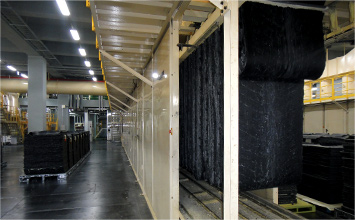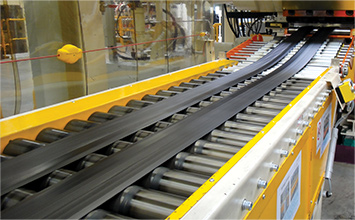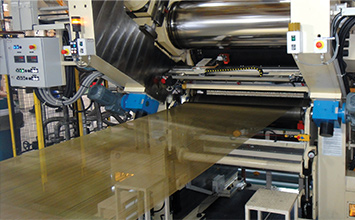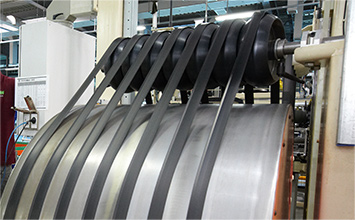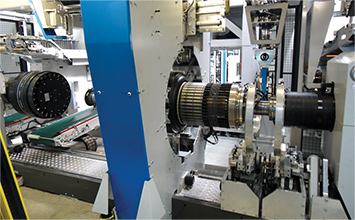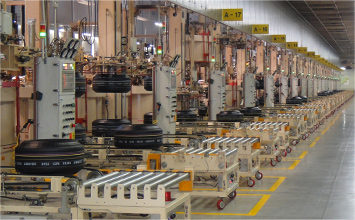Step 1. Mixing Process
The ‘mixing Process’ involves adding and mixing
various chemicals to crude rubber according to the characteristics and
intended use of each tire. Rubber sheets are created by adding
plasticity to rubber so that its shape does not change easily.
Step 2. Extrusion Process
Once rubber sheets are made according to the
characteristics of each part of the tire through the ‘mixing
Process,’ rubber is then created into a certain regular width and
thickness through the ‘extrusion process.’ Here, the treads
(outer surface of the tire) and sidewalls (sides of the tire) are
created, which is an important process for cozy and comfortable driving.
Step 3. Calendering Process
The ‘calendering Process’ involves evenly
applying and thinly topping a certain thickness of rubber sheets created
in the ‘mixing Process’ on both sides of steel cords and
fabric cords. Rubber is coated on the front and back by pushing steel
cords and fabric cords through the constantly rolling rollers. Tires can
endure the car weight and maintain a certain form due to this
‘calendering Process’ (cords).
Step 4. Bead Process
The ‘bead process’ is the process of coating
steel wires with rubber multiple times in a certain thickness, and
attaching filler rubber here. Beads fix the rubber of the tires to the
wheels, serving as the frame of tire rims and thus making the tires
stronger if there are more beads.
Step 5. Building Process
Now, there is the ‘building Process’ in which
cylindrical green tires are made by consecutively attaching all
components and materials used in tires to the molding press. This
‘building Process’ requires a great of attention since it
determines the quality of the tires. Radial tires used in automobiles
first require the process of attaching the ‘carcass’ (the
frame of the tire located inside the tread), ‘beads’ (the
frame fixed on the rim of wheels), and ‘sidewalls.’ Then,
they are transferred to the secondary molding press to complete tires by
attaching belts and treads.
Step 6. Curing Process
The ‘curing process’ involves adding heat and
pressure inside and outside by putting tires made of flexible rubber in
a fixed mold. Sulfur and other chemicals react to rubber and create a
unique design of NEXEN TIRE on the tread, and also apply elasticity to
the rubber. Also, they provide any desired structure, shape, exterior,
and mechanical/chemical characteristics.
Step 7. Test Process and Shipping
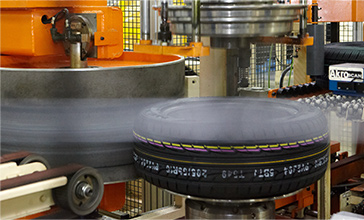
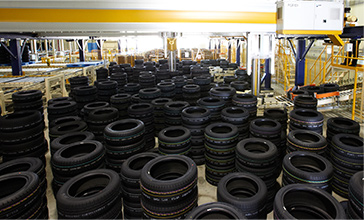
The ‘test process’ consists of five detailed
tests.
First, there is the ‘visual test’ that inspects the
exterior and interior of the tire as well as the bead with the naked eye.
Second, there is the testing of the tire as a single product before
assembling on the wheel, and also whether the tire weight distribution is
consistent in the circumferential direction (*direction of ultrasonic beam
that is vertical to the main shaft of the cylindrical device) in the static
state. Third, there is the ‘dynamic balance test’ that measures
the weight uniformity in the circumferential direction after rotation when
the tires are assembled on the wheels and optimal air pressure is put into
the tires. Fourth, there is the ‘uniformity test’ that tests the
uniformity of size and rigidity of the product. Finally, x-rays are used to
test the carcass inside the tires, structure of belts, and mixing of foreign
matters, after which the manufactured products are automatically classified
and shipped.


